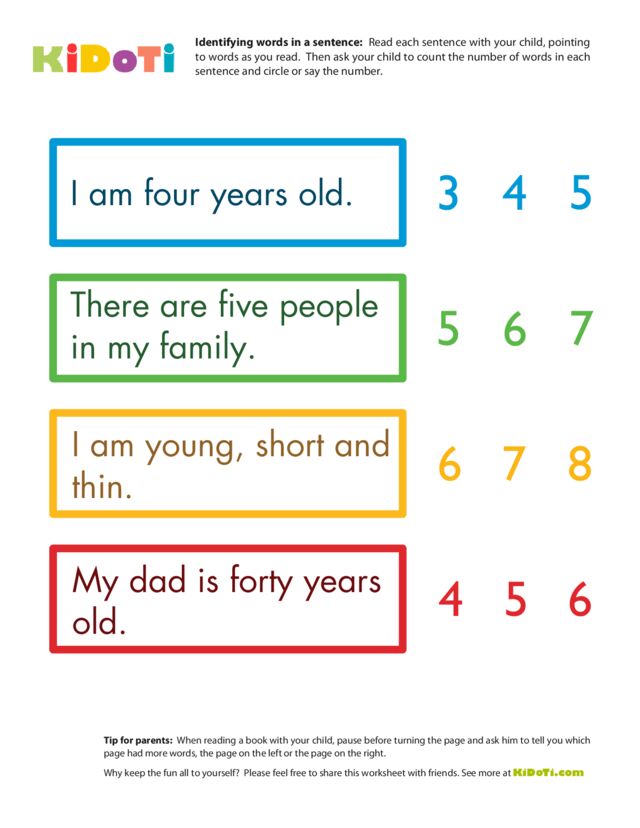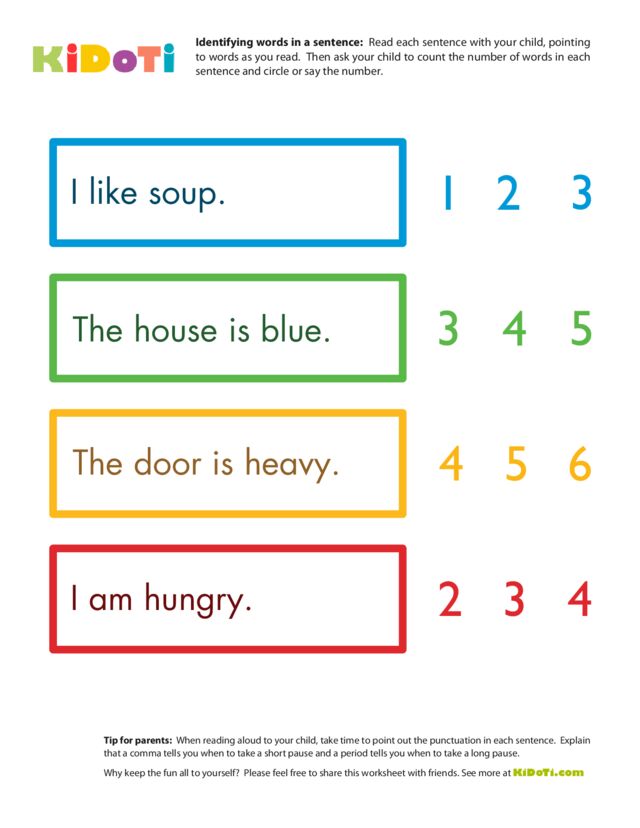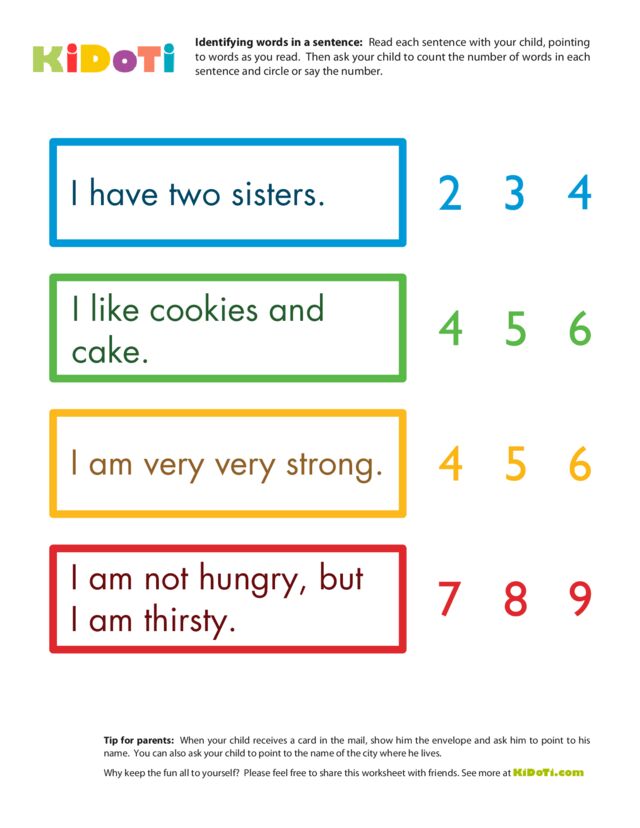To read or write successfully, children need to understand that letters form words and that words form sentences. The following worksheets will increase your child’s awareness of how words combine to form sentences and introduce the idea of capitalization and punctuation.
Identifying words in a sentence is an important pre-reading skill
The first pre-reading concept taught to children is the idea that a group of letters forms a word. This concept is reinforced when children are taught that these groups of letters or words have a meaning and are separated by spaces when they are written in a sentence. Knowing that a separated group of letters represents on word helps a child attack a whole sentence when learning to read. The task is less overwhelming if a child can focus on one word at a time.
This concept is also important when children begin to write. When they write down letters to represent the sounds they hear in words, it is very important to leave spaces between their words. A young child’s inventive spelling can be challenging to decipher to begin with, and a string of letters representing more that one word becomes quite difficult to read. (Putting their finger next to the word before writing a new word helps create appropriate space between words.) Children need constant reminders to separate their words, and practice identifying words in a sentence helps them understand the importance of leaving spaces between words.
Understanding punctuation is an important pre-reading skill
Recognizing punctuation marks and how they work in sentences is also very helpful for children when they are beginning to read. Again, a mass of letters on a page can be overwhelming for a beginning reader. When a child can recognize a sentence as a group of words that ends with a period, he can focus on reading one sentence at a time. When your child follows the printed words as you read, he will begin to learn how the punctuation marks indicate times to pause and changes in voice tone. Eventually he will also begin to use the correct voice inflection when he recognizes the period at the end of the sentence and will learn to pause when he sees a comma.
Tips for using these identifying words in a sentence worksheets
Begin by explaining to your child that a word is a group of one or more letters with a meaning and that this group is separated by spaces from other groups of letters. He will see the word I on the worksheets and will have opportunities to practice counting that letter as a word.
Next, read the sentences on the worksheets aloud to your child and point to each word as you read. Then ask your child to point to each word as you read the sentence once more.
Finally, ask your child to point to each word and count as he points to identify how many words are in the sentence. Then ask him to circle the correct number at the end of the sentence.
Some words in these sentences are quite short (is, am, in, and to, for example) while others as long (hippopotomuses, Columbus, swimming). And some words are capitalized (Ohio, Boise, Idaho, Fluffy, to name a few). This variation is intentional, as it provides opportunities for children to understand that although words come in all sizes and configurations, a group of letters that has meaning represents a word.
Extra activities to supplement these identifying words in a sentence worksheets
- When reading aloud to your child, take time to point out the punctuation in each sentence. Explain that a comma tells you when to take a short pause and a period tells you when to take a long pause.
- When reading aloud to your child, ask him to point to the words as you read. Then read slowly enough that he can learn to move one word to the right after each word that you read. Also, pause before turning the page and ask him to tell you which page had more words, the page on the left or the page on the right.
- When your child receives a card in the mail, show him the envelope and ask him to point to his name. You can also ask your child to point to the name of the city where he lives.


